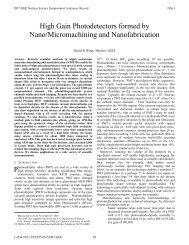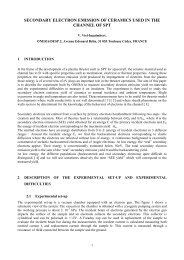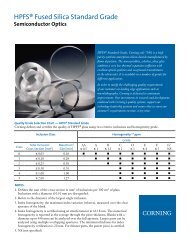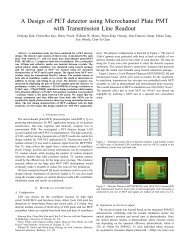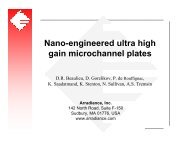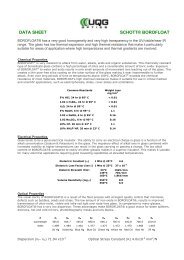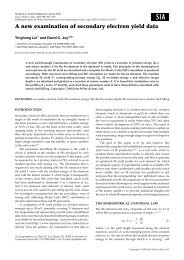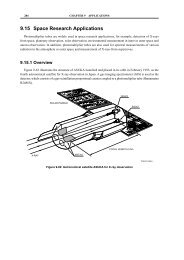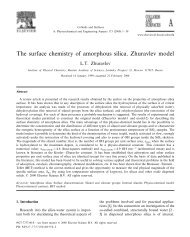The effective secondary electron yield in the space-charge limited ...
The effective secondary electron yield in the space-charge limited ...
The effective secondary electron yield in the space-charge limited ...
You also want an ePaper? Increase the reach of your titles
YUMPU automatically turns print PDFs into web optimized ePapers that Google loves.
I.V. Tsvetkov, T. Tanabe / Journal of Nuclear Materials 258±263 (1998) 927±933 931Fig. 4. E€ective <strong>electron</strong> <strong>yield</strong> d e for W, Mo, C and Be aga<strong>in</strong>st E p . T e ˆ 30 eV, n 0 ˆ 10 18 m 3 .of plasma density (Figs. 4 and 6). That is because <strong>the</strong>gyro-radius of high-energy <strong>electron</strong>s is close to <strong>the</strong>sheath thickness and <strong>electron</strong>s easily escape from anoblique magnetic ®eld. Even if <strong>the</strong> magnetic ®eld wasparallel to <strong>the</strong> surface, d e would not be zero ow<strong>in</strong>g tohigher re¯ection.Below a primary <strong>electron</strong> energy E p ˆ 4 keV <strong>the</strong><strong>secondary</strong> <strong>electron</strong> <strong>yield</strong> is nearly <strong>the</strong> same for a sheaththickness d ˆ 10k D as for d ˆ 5k D , as shown <strong>in</strong> Fig. 7.Above 4 keV, d e is smaller for d ˆ 10k D . For d ˆ 5k D<strong>the</strong> <strong>secondary</strong> <strong>electron</strong> <strong>yield</strong> <strong>in</strong>creases above 4 keV andfor d ˆ 10k D above 16 keV, because <strong>the</strong> energy has to beFig. 5. Contribution of <strong>the</strong> re¯ected <strong>electron</strong>s on <strong>the</strong> e€ective <strong>electron</strong> <strong>yield</strong> as a function of E p . T e ˆ 30 eV, n 0 ˆ 10 18 m 3 .



